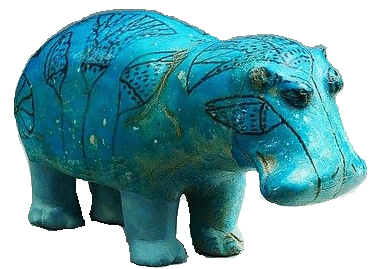metonymy

metonymy

換喩(metonymy):か んゆ・メトニミーとは、部分をもって全体を表象することである。表象による表現の一種であるが、隠喩 と異なり(上掲参照)、部分をもって全体を表象する修辞 のことである。メトニミーと読む。この換喩(メトニミー)の例は、王を王冠で表象するようなものである。王は身体の一部に王冠を戴く存在だからである。し たがって、隠喩が王とライオンを全体的な関係で表象しているのに対して、換喩は部分と全体の関係を関連性ないしは延長としてみていることがわかる。
| Metonymy
(/mɪˈtɒnɪmi, mɛ-/)[1][2][3] is a figure of speech in which a concept is
referred to by the name of something associated with that thing or
concept.[4] For example, the word "suit" may refer to a person from
groups commonly wearing business attire, such as salespeople or
attorneys.[5] |
メトニミー=換喩(/mɪˈ)[1][2][3]
とは、ある概念が、その物事や概念に関連するものの名前によって言及される言葉の綾である。例えば、「スーツ」という言葉は、営業マンや弁護士など、一般
的にビジネス服を着ているグループの人格を指すことがある[5]。 |
| Etymology The words metonymy and metonym come from Ancient Greek μετωνυμία (metōnumía) 'a change of name'; from μετά (metá) 'after, post, beyond' and -ωνυμία (-ōnumía), a suffix that names figures of speech, from ὄνυμα (ónuma) or ὄνομα (ónoma) 'name'.[6] |
語源 メトニミー(metonymy)およびメトニム(metonym)という言葉は、古代ギリシア語のμετωνυμία(metōnumía)「名前の変 化」に由来し、μετά(metá)「後、後、越えて」と、ὄνυμα(ónuma)ὄνομα(ónoma) 「名前」に由来する、品詞に名前を付ける接尾辞である-ωνυμία(-ōnumía)に由来する[6]。 |
| Background Metonymy and related figures of speech are common in everyday speech and writing. Synecdoche and metalepsis are considered specific types of metonymy. Polysemy, the capacity for a word or phrase to have multiple meanings, sometimes results from relations of metonymy. Both metonymy and metaphor involve the substitution of one term for another.[7] In metaphor, this substitution is based on some specific analogy between two things, whereas in metonymy the substitution is based on some understood association or contiguity.[8][9] American literary theorist Kenneth Burke considers metonymy as one of four "master tropes": metaphor, metonymy, synecdoche, and irony. He discusses them in particular ways in his book A Grammar of Motives. Whereas Roman Jakobson argued that the fundamental dichotomy in trope was between metaphor and metonymy, Burke argues that the fundamental dichotomy is between irony and synecdoche, which he also describes as the dichotomy between dialectic and representation, or again between reduction and perspective.[10] In addition to its use in everyday speech, metonymy is a figure of speech in some poetry and in much rhetoric. Greek and Latin scholars of rhetoric made significant contributions to the study of metonymy. |
背景 比喩やそれに関連する言葉の形は、日常会話や文章でよく使われる。シネクドシュとメタレプシスはメトニミーの特定のタイプと考えられている。ある単語や語 句が複数の意味を持つ多義性(polysemy)は、時にメトニミーの関係から生じる。隠喩においては、この置換は2つの事物の間の何らかの具体的な類似 に基づくが[7]、メトニミーにおいては、置換は何らかの理解された関連性や連続性に基づく[8][9]。 アメリカの文学理論家であるケネス・バークは、隠喩、メトニミー、シネクドシュ、アイロニーの4つの「マスター・トロピー」の1つとしてメトニミーを考え ている。彼は著書『A Grammar of Motives(動機の文法)』の中で、それらを個別主義的に論じている。ローマン・ヤコブソンが語法における基本的な二分法は隠喩と換喩の間にあると主 張したのに対し、バークは基本的な二分法はアイロニーとシネクドシュの間にあると主張し、弁証法と表象の間の二分法、あるいは還元と遠近法の間の二分法と も表現している[10]。 日常会話における使用に加えて、メトニミーはいくつかの詩や多くの修辞学における言葉の綾である。ギリシャ語やラテン語の修辞学の学者たちは、メトニミー の研究に大きな貢献をした。 |
| Related concepts Metaphor substitutes the name by an analogy, rather than by an association. Synecdoche uses a part to refer to the whole, or the whole to refer to the part.[11][12][13] Metalepsis uses a familiar word or a phrase in a new context.[14] For example, "lead foot" may describe a fast driver; lead is proverbially heavy, and a foot exerting more pressure on the accelerator causes a vehicle to go faster (in this context unduly so).[15] The figure of speech is a "metonymy of a metonymy".[14] Many cases of polysemy originate as metonyms: for example, "chicken" means the meat as well as the animal; "crown" for the object, as well as the institution.[16][17] |
関連概念 隠喩(いんゆ)とは、連想ではなく類推によって名前を置き換えることである。 シネクドシュは、ある部分を用いて全体を参照したり、全体を用いてその部分を参照したりする[11][12][13]。 メタレプシス(metalepsis)は、馴染みのある単語や語句を新たな文脈で使用する[14]。例えば、「鉛の足」は速いドライバーを表すことがあ る。鉛はことわざで重いものであり、アクセルをより強く踏む足は(この文脈では不当に)車を速く走らせる。 例えば、「チキン」は動物だけでなく肉も意味し、「クラウン」は対象だけでなく制度も意味する[16][17]。 |
 Metaphor: Argentine president Javier Milei using a chainsaw as a metaphor for cuts to public spending |
 隠喩: アルゼンチンの ハビエル・ミレイ大統領は、公共支出 削減の隠喩としてチェーンソーを使っている。 |
 Metonymy: The term "Wall Street" has become a metonym for the financial markets of the United States as a whole |
 隠喩である:「 ウォール街」という用語は、アメリカ全体の金融市場を表すメトニミーになっている。 |
| Versus metaphor Main article: Metaphor and metonymy Metonymy works by the contiguity (association) between two concepts, whereas the term "metaphor" is based upon their analogous similarity. When people use metonymy, they do not typically wish to transfer qualities from one referent to another as they do with metaphor.[18] There is nothing press-like about reporters or crown-like about a monarch, but "the press" and "the crown" are both common metonyms. Some uses of figurative language may be understood as both metonymy and metaphor; for example, the relationship between "a crown" and a "king" could be interpreted metaphorically (i.e., the king, like his gold crown, could be seemingly stiff yet ultimately malleable, over-ornate, and consistently immobile). In the phrase "lands belonging to the crown", the word "crown" is a metonymy. The reason is that monarchs by and large indeed wear a crown, physically. In other words, there is a pre-existent link between "crown" and "monarchy". On the other hand, when Ghil'ad Zuckermann argues that the Israeli language is a "phoenicuckoo cross with some magpie characteristics", he is using metaphors.[19]: 4 There is no physical link between a language and a bird. The reason the metaphors "phoenix" and "cuckoo" are used is that on the one hand hybridic "Israeli" is based on Hebrew, which, like a phoenix, rises from the ashes; and on the other hand, hybridic "Israeli" is based on Yiddish, which like a cuckoo, lays its egg in the nest of another bird, tricking it to believe that it is its own egg. Furthermore, the metaphor "magpie" is employed because, according to Zuckermann, hybridic "Israeli" displays the characteristics of a magpie, "stealing" from languages such as Arabic and English.[19]: 4–6 Two examples using the term "fishing" help clarify the distinction.[20] The phrase "to fish pearls" uses metonymy, drawing from "fishing" the idea of taking things from the ocean. What is carried across from "fishing fish" to "fishing pearls" is the domain of metonymy. In contrast, the metaphorical phrase "fishing for information" transfers the concept of fishing into a new domain. If someone is "fishing" for information, we do not imagine that the person is anywhere near the ocean; rather, we transpose elements of the action of fishing (waiting, hoping to catch something that cannot be seen, probing, and most importantly, trying) into a new domain (a conversation). Thus, metaphors work by presenting a target set of meanings and using them to suggest a similarity between items, actions, or events in two domains, whereas metonymy calls up or references a specific domain (here, removing items from the sea). Sometimes, metaphor and metonymy may both be at work in the same figure of speech, or one could interpret a phrase metaphorically or metonymically. For example, the phrase "lend me your ear" could be analyzed in a number of ways. One could imagine the following interpretations: Analyze "ear" metonymically first – "ear" means "attention". The phrase "Talk to him; you have his ear" also echoes this meaning. In both this phrase and "lending an ear", we stretch the base meaning of possession and lending (to let someone borrow an object) to include non-material things (attention), but, beyond this slight extension of the verb, no metaphor is at work. In this vein, Merriam Webster argues that "lend me your ear" is a metonym and not a synecdoche because what's being requested is the viewer's attention and the ear is only a part of the viewer's attention in a figurative way, but not literally.[21] Imagine the whole phrase literally – imagine that the speaker literally borrows the listener's ear as a physical object (and the person's head with it). Then the speaker has temporary possession of the listener's ear, so the listener has granted the speaker temporary control over what the listener hears. The phrase "lend me your ear" is interpreted to metaphorically mean that the speaker wants the listener to grant the speaker temporary control over what the listener hears. First, analyze the verb phrase "lend me your ear" metaphorically to mean "turn your ear in my direction", since it is known that, literally lending a body part is nonsensical. Then, analyze the motion of ears metonymically – we associate "turning ears" with "paying attention", which is what the speaker wants the listeners to do. It is difficult to say which analysis above most closely represents the way a listener interprets the expression, and it is possible that different listeners analyse the phrase in different ways, or even in different ways at different times. Regardless, all three analyses yield the same interpretation. Thus, metaphor and metonymy, though different in their mechanism, work together seamlessly.[22] |
対隠喩 主な記事 隠喩とメトニミー 隠喩(metonymy)は2つの概念の間の連続性(関連性)によって機能するのに対し、「隠喩(metaphor)」という用語はそれらの類似性に基づ いている。人民が隠喩(メトニミー)を使う場合、隠喩で行うように、ある参照語から別の参照語へ性質を移そうとすることは通常ない[18]。記者には記者 らしいものはなく、君主には王冠らしいものはないが、「記者」と「王冠」はどちらも一般的な隠喩である。 たとえば、「王冠」と「王」の関係は隠喩的に解釈することができる(すなわち、王は金の王冠のように、一見硬いように見えるが、究極的には柔順であり、過 度な装飾が施され、一貫して動かない)。王冠に属する土地」というフレーズでは、「王冠」という言葉はメトニミーである。というのも、君主はたいてい、物 理的には確かに王冠を被っているからだ。つまり、「王冠」と「君主制」の間にはあらかじめつながりがあるのだ。一方、ギルアド・ズッカーマンがイスラエル 語は「カササギの特徴を持つフェニカッコーの交配種」だと主張するとき、彼は隠喩を使っている[19]: 4 言語と鳥の間には物理的なつながりはない。不死鳥」と「カササギ」という隠喩が使われているのは、一方ではハイブリッドな「イスラエル語」が、不死鳥のよ うに灰の中から蘇るヘブライ語をベースにしているからであり、他方ではハイブリッドな「イスラエル語」が、カササギのように他の鳥の巣に卵を産み付け、そ れが自分の卵であると騙すイディッシュ語をベースにしているからである。さらに、「カササギ」という隠喩が使われるのは、ズッカーマンによれば、ハイブ リッドな「イスラエル語」がカササギの特徴を示し、アラビア語や英語などの言語から「盗む」ためである[19]: 4-6 真珠を釣る」というフレーズは、「釣る」から海から物を取るという発想を引き出し、メトニミーを用いている[20]。魚を釣る」から「真珠を釣る」へと引 き継がれるのは、メトニミーの領域である。対照的に、「情報を釣る」という隠喩的な表現は、釣りの概念を新しい領域に移す。誰かが情報を求めて「釣り」を している場合、私たちはその人格が海の近くにいることを想像するのではなく、釣りの動作の要素(待つこと、見えない何かを釣ることを望むこと、探ること、 そして最も重要なのは試みること)を新しい領域(会話)に移し替えるのである。このように、隠喩は対象となる意味のセットを提示し、それを使って2つの領 域におけるアイテム、行動、または出来事の類似性を示唆することによって機能するのに対し、メトニミーは特定の領域(ここでは海からアイテムを取り除くこ と)を呼び出したり参照したりする。 時には、隠喩とメトニミーが同じ言葉の形の中で両方働くこともあるし、あるフレーズを隠喩的に解釈することもメトニミー的に解釈することもある。例えば、 「耳を貸してください」というフレーズはいろいろな解釈ができる。次のような解釈が考えられる: まず 「ear 」を比喩的に分析する。「ear 」は「注意」を意味する。彼に話しかけなさい、あなたは彼の耳を持っている」というフレーズもこの意味と呼応している。このフレーズも「耳を貸す」という フレーズも、所有と貸与の基本的な意味(誰かに物を貸す)を、非物質的なもの(注意)を含むように拡張しているが、この動詞のわずかな拡張を超えたところ では、隠喩は働いていない。この流れで、メリアム・ウェブスターは、要求されているのは視聴者の注意であり、耳は比喩的な意味で視聴者の注意の一部である にすぎず、文字通りの意味ではないから、「耳を貸してください」は同意語ではなく同意語(metonym)であると論じている[21]。 このフレーズ全体を文字どおり想像してみよう。話し手が聴き手の耳を物理的な物体として(そしてそれと一緒に人格の頭も)文字どおり借りたと想像してみよ う。そうすると、話し手は聞き手の耳を一時的に所有することになり、聞き手は、聞き手が何を聞くかを一時的にコントロールすることを話し手に認めたことに なる。あなたの耳を貸してください」というフレーズは、話し手が聞き手に、聞き手が聞くものに対する一時的な支配権を話し手に与えることを望んでいること を隠喩していると解釈される。 まず、「lend me your ear 」という動詞句を隠喩的に「耳を私の方に向けなさい」という意味に分析する。次に、耳の動きを比喩的に分析する。「耳を向ける」ことから、話し手が聞き手 に求めている「注意を払う」ことを連想する。 上記のどの分析が聞き手がこの表現を解釈する方法に最も近いかを言うのは難しいし、聞き手によってこのフレーズを異なる方法で分析したり、あるいは時間に よって異なる方法で分析したりする可能性もある。それにもかかわらず、3つの分析はすべて同じ解釈をもたらす。このように、隠喩とメトニミーは、そのメカ ニズムは異なるものの、シームレスに連動する[22]。 |
| Examples Main article: List of metonyms  The White House is the official residence of the President of the United States, and its name is a common metonym for the presidency and cabinet of the United States. Here are some broad kinds of relationships where metonymy is frequently used: Tools/instruments: Often a tool is used to signify the job it does or the person who does the job, as in the phrase "his Rolodex is long and valuable" (referring to the Rolodex instrument, which keeps contact business cards, meaning he has a lot of contacts and knows many people). Also "the press" (referring to the printing press), or as in the proverb, "The pen is mightier than the sword." Product for process: This is a type of metonymy where the product of the activity stands for the activity itself. For example, in "The book is moving right along", the book refers to the process of writing or publishing.[23] Punctuation marks often stand metonymically for a meaning expressed by the punctuation mark. For example, "He's a big question mark to me" indicates that something is unknown.[24] In the same way, 'period' can be used to emphasise that a point is concluded or not to be challenged. Synecdoche: A part of something is often used for the whole, as when people refer to "head" of cattle or assistants are referred to as "hands". An example of this is the Canadian dollar, referred to as the loonie for the image of a bird on the one-dollar coin. United States one hundred-dollar bills are often referred to as "Bens", "Benjamins" or "Franklins" because they bear a portrait of Benjamin Franklin. Also, the whole of something is used for a part, as when people refer to a municipal employee as "the city" or police officers as "the law".  Fleet Street (where most British national newspapers previously operated) is a metonym for the British press A physical item, place, or body part used to refer to a related concept, such as "the bench" for the judicial profession, "stomach" or "belly" for appetite or hunger, "mouth" for speech, being "in diapers" for infancy, "palate" for taste, "the altar" or "the aisle" for marriage, "hand" for someone's responsibility for something ("he had a hand in it"), "head" or "brain" for mind or intelligence, or "nose" for concern about someone else's affairs, (as in "keep your nose out of my business"). A reference to Timbuktu, as in "from here to Timbuktu", usually means a place or idea is too far away or mysterious. Containment: When one thing contains another, it can frequently be used metonymically, as when "dish" is used to refer not to a plate but to the food it contains, when a "book" refers not to pages bound at the edge but to the work of literature it contains, or as when the name of a building is used to refer to the entity it contains, as when "the White House" or "the Pentagon" are used to refer to the Administration of the United States, or the U.S. Department of Defense, respectively. Toponyms: A country's capital city or some location within the city is frequently used as a metonym for the country's government, such as Washington, D.C., in the United States; Ottawa in Canada; Rome in Italy; Paris in France; Tokyo in Japan; New Delhi in India; London in the United Kingdom; Moscow in Russia, etc. Perhaps the oldest such example is "Pharaoh" which originally referred to the residence of the King of Egypt but by the New Kingdom had come to refer to the king himself. Similarly, other important places, such as Wall Street, K Street, Madison Avenue, Silicon Valley, Hollywood, Vegas, and Detroit are commonly used to refer to the industries that are located there (finance, lobbying, advertising, high technology, entertainment, gambling, and motor vehicles, respectively). Such usage may also extend to surrounding areas of these regions, such as film studios in Burbank or tech companies in the broader San Francisco Bay Area. Such usage may persist even when the industries in question have either moved elsewhere or have never been solely contained to one area, for example, individuals speaking of "Silicon Valley" may be thinking of Microsoft in Washington state, and Fleet Street continues to be used as a metonymy for the British national press, though many national publications are no longer headquartered on the street of that name.[25] |
例 主な記事 対義語の一覧  ホワイトハウスはアメリカ合衆国大統領の公邸であり、その名前はアメリカ合衆国大統領職と内閣の一般的な対義語である。 以下は、メトニミーが頻繁に使われる大まかな関係の種類である: 道具/器具: 道具/器具:「彼のロロデックスは長くて貴重だ」(連絡先の名刺を保管するロロデックスという器具のこと。) また、「the press」(印刷機のこと)、あるいは 「The pen is mightier than the sword」(ペンは剣よりも強し)ということわざのような意味もある。 プロセスに対する製品: これはメトニミーの一種で、活動の産物が活動そのものを表す。例えば、「The book is moving right along 」では、本は執筆や出版のプロセスを指す[23]。 句読点はしばしば、句読点によって表現される意味を表す。例えば、「彼は私にとって大きな疑問符だ」は、何かが未知であることを示す[24]。同じよう に、「ピリオド」は、ある指摘が結論に達していること、あるいは異議を唱える必要がないことを強調するために使われることがある。 類義語:人民が牛の「頭」を指すときや、助手を「手」と呼ぶときのように、何かの一部が全体のために使われることがよくある。この例として、1ドル硬貨に 描かれた鳥の絵から「ルーニー」と呼ばれるカナダドルがある。アメリカの100ドル紙幣は、ベンジャミン・フランクリンの肖像画が描かれていることから、 「ベン」、「ベンジャミン」、「フランクリン」と呼ばれることが多い。また、人民が自治体の職員を「市」と呼んだり、警察官を「法律」と呼んだりするよう に、何かの全体が部分に対して使われることもある。  フリート・ストリート(イギリスのほとんどの国民新聞が以前営業していた場所)は、イギリスの報道機関を表すメトニムである。 物理的なアイテム、場所、または体の一部が、関連する概念を指すために使用される。例えば、「ベンチ」は司法の専門職、「胃」または「腹」は食欲や空腹、 「口」は会話、「おむつをしている」は幼児期、「口蓋」は味覚を表す、 「祭壇 「や 」バージンロード 「は結婚、」hand 「は誰かの責任(」he had a hand in it「)、」head 「や 」brain 「は心や知性、」nose 「は他人のことが気になる(」keep your nose out of my business "のように)。ここからトンブクトゥまで」のようにトンブクトゥに言及する場合は、通常、その場所や考えが遠すぎる、あるいは神秘的であることを意味す る。 封じ込め: あるものが別のものを含んでいるとき、それはしばしば比喩的に使われることがある。例えば、「dish」が皿を指すのではなく、それが含んでいる食べ物を 指すときに使われたり、「book」が端に綴じられたページを指すのではなく、それが含んでいる文学作品を指すときに使われたり、「the White House」や「the Pentagon」がそれぞれアメリカ行政府やアメリカ国防総省を指すときに使われるように、建物の名前がそれが含んでいる実体を指すときに使われたりす る。 トポニム: アメリカのワシントンD.C.、カナダのオタワ、イタリアのローマ、フランスのパリ、日本の東京、インドのニューデリー、イギリスのロンドン、ロシアのモ スクワなどである。おそらく最も古い例は「ファラオ」で、もともとはエジプト王の居城を指していたが、新王国時代には王自身を指すようになった。同様に、 ウォール街、Kストリート、マディソン・アベニュー、シリコンバレー、ハリウッド、ラスベガス、デトロイトといった他の重要な場所も、そこに立地する産業 (それぞれ金融、ロビー活動、広告、ハイテク、娯楽、ギャンブル、自動車)を指す言葉として一般的に使われている。このような用法は、バーバンクの映画ス タジオや、より広いサンフランシスコ・ベイエリアのハイテク企業など、これらの地域の周辺地域にも及ぶことがある。例えば、「シリコンバレー」と言えば、 ワシントン州にあるマイクロソフトを思い浮かべるかもしれないし、フリート・ストリートは、多くの国民的出版物がもはやその名前の通りに本社を置いていな いにもかかわらず、イギリスの国民的報道機関の比喩として使われ続けている[25]。 |
| Places and institutions The Kremlin is often used as a metonym for the central governments of both the Soviet Union and modern Russia The name of a capital city or notable government building is often used to refer to the authority headquartered there, Brussels for the European Union,[26][27] The Hague for the International Court of Justice or International Criminal Court (and often international courts generally), Nairobi for the government of Kenya, the Kremlin for that of Russia (and historically, the Soviet Union), or the White House and Foggy Bottom for the United States' Executive Office and State Department, respectively, or Zhongnanhai for the central government of China. A notable historical example is the use of the Sublime Porte to refer to the central government (or more particularly, sometimes the foreign ministry) of the Ottoman Empire. A place (or places) can represent an entire industry. For instance: Wall Street, used metonymically, can stand for the United States'. financial sector and major banks;[28] K Street for Washington, D.C.'s lobbying industry or lobbying in the United States in general;[29] Hollywood for the U.S. film industry, and the people associated with it; Broadway for the American commercial theatrical industry; Madison Avenue for the American advertising industry; and Silicon Valley for the American technology industry. The High Street (of which there are over 5,000 in Britain) is a term commonly used to refer to the entire British retail sector.[30] Common nouns and phrases can also be metonyms: "red tape" can stand for bureaucracy, whether or not that bureaucracy uses actual red tape to bind documents. In Commonwealth realms, the Crown is a legal metonym for the state in all its aspects.[31] |
場所と機関 クレムリンは、ソビエト連邦と現代ロシアの中央政府を指す言葉としてよく使われる。 首都や著名な政府の建物の名称は、そこに本部を置く当局を指すために使われることが多く、欧州連合(EU)はブリュッセル、[26][27]国際司法裁判 所や国際刑事裁判所(および多くの場合、国際裁判所全般)はハーグ、ケニア政府はナイロビ、ロシア(および歴史的にはソビエト連邦)はクレムリン、アメリ カの行政府と国務省はそれぞれホワイトハウスとフォギーボトム、中国の中央政府は中南海を指す。歴史的に特筆すべき例としては、オスマン帝国の中央政府 (個別主義では外務省を指すこともある)を指すのにSublime Porteが使われたことがある。 場所(または複数の場所)は、産業全体を表すことができる。例えば、ウォール街だ: ウォール街はアメリカの金融セクターと大手銀行を表し、[28] KストリートはワシントンD.C.のロビー業界またはアメリカにおけるロビー活動全般を表し、[29] ハリウッドはアメリカの映画業界とそれに関わる人々を表し、ブロードウェイはアメリカの商業演劇業界を表し、マディソン・アベニューはアメリカの広告業界 を表し、シリコンバレーはアメリカのテクノロジー業界を表す。ハイストリート(イギリスには5,000以上のハイストリートがある)は、イギリスの小売業 全体を指す言葉として一般的に使われている[30]。一般的な名詞や語句は、メトニム(対義語)になることもある。「red tape 」は官僚主義を表すこともあり、その官僚主義が実際の赤いテープを使って書類を縛っているかどうかは問わない。英連邦諸国では、王室はあらゆる側面におけ る国家の法的な同意語である[31]。 |
| Art Metonyms can also be wordless. For example, Roman Jakobson[32] argued that cubist art relied heavily on nonlinguistic metonyms, while surrealist art relied more on metaphors. Lakoff and Turner[33] argued that all words are metonyms: "Words stand for the concepts they express". Some artists have used actual words as metonyms in their paintings. For example, Miró's 1925 painting "Photo: This is the Color of My Dreams" has the word "photo" to represent the image of his dreams. This painting comes from a series of paintings called peintures-poésies (paintings-poems) which reflect Miró's interest in dreams and the subconscious[34] and the relationship of words, images, and thoughts. Picasso, in his 1911 painting "Pipe Rack and Still Life on Table" inserts the word "Ocean" rather than painting an ocean: These paintings by Miró and Picasso are, in a sense, the reverse of a rebus: the word stands for the picture, instead of the picture standing for the word. |
アート メトニムは言葉を介さないこともある。例えば、ロマン・ヤコブソン[32]は、キュビスム芸術は非言語的な隠喩に大きく依存し、シュルレアリスム芸術は隠 喩に大きく依存していると主張した。 レイコフとターナー[33]は、すべての言葉はメトニムであると主張した。絵の中で実際の言葉をメトニムとして使っている画家もいる。例えば、ミロの 1925年の絵画「写真: This is the Color of My Dreams(これは私の夢の色)」は、彼の夢のイメージを「写真」という言葉で表している。この絵画は、夢や潜在意識[34]、言葉、イメージ、思考の 関係に対するミロの関心を反映した、peintures-poésies(絵画-詩)と呼ばれる一連の絵画から生まれた。ピカソは1911年に描いた「パ イプラックとテーブルの上の静物」の中で、海を描くのではなく「海」という言葉を挿入している: ミロとピカソのこれらの絵画は、ある意味、リブスの逆である。絵が言葉を表すのではなく、言葉が絵を表すのである。 |
| -onym Antonomasia Deferred reference Eggcorn Eponym Enthymeme Euphemism by comparison Generic trademark Kenning List of metonyms Meronymy Newspeak Pars pro toto Simile Slang Sobriquet Social stereotype Synecdoche Totum pro parte |
-アントニム アントノマシア 遅延参照 エッグコーン エポニム 韻律 比較による婉曲表現 一般商標 ケニング メトニムのリスト メロニミー ニュースピーク パース・プロ・トゥート 類語 俗語 俗称 社会的ステレオタイプ シネクドシュ 全部 |
| Sources Blank, Andreas (1997). Prinzipien des lexikalischen Bedeutungswandels am Beispiel der romanischen Sprachen. Walter de Gruyter. ISBN 978-3-11-093160-0. Corbett, Edward P.J. (1998) [1971]. Classical Rhetoric for the Modern Student (4th ed.). New York: Oxford University Press. ISBN 978-0-19-511542-0. Dirven, René (1999). "Conversion as a Conceptual Metonymy of Event Schemata". In K.U. Panther; G. Radden (eds.). Metonymy in Language and Thought. John Benjamins Publishing. pp. 275–288. ISBN 978-90-272-2356-2. Fass, Dan (1997). Processing Metonymy and Metaphor. Ablex. ISBN 978-1-56750-231-2. Grzega, Joachim (2004). Bezeichnungswandel: Wie, Warum, Wozu? Ein Beitrag zur englischen und allgemeinen Onomasiologie. Heidelberg: Universitätsverlag Winter [de]. ISBN 978-3-8253-5016-1. Lakoff, George; Johnson, Mark (1999). Philosophy in the Flesh: The Embodied Mind and Its Challenge to Western Thought. Basic Books. ISBN 978-0-465-05674-3. Somov, Georgij Yu. (2009). "Metonymy and its manifestation in visual artworks: Case study of late paintings by Bruegel the Elder". Semiotica. 2009 (174): 309–66. doi:10.1515/semi.2009.037. S2CID 170990814. Smyth, Herbert Weir (1920). Greek Grammar. Cambridge MA: Harvard University Press. p. 680. ISBN 978-0-674-36250-5. Warren, Beatrice (2006). Referential Metonymy. Publications of the Royal Society of Letters at Lund. Lund, Sweden: Almqvist & Wiksell International. ISBN 978-91-22-02148-3. |
出典 Blank, Andreas (1997). ロマンス語を例にした語彙の意味変化の原則。Walter de Gruyter. ISBN 978-3-11-093160-0. Corbett, Edward P.J. (1998) [1971]. 現代学生のための古典修辞学 (第 4 版)。ニューヨーク:オックスフォード大学出版局。ISBN 978-0-19-511542-0。 ディルヴェン、ルネ(1999)。「イベント・スキーマの概念的換喩としての変換」。K.U. パンサー、G. ラッデン(編)。『言語と思考における換喩』。ジョン・ベンジャミンズ出版。275-288 ページ。ISBN 978-90-272-2356-2。 ファス、ダン (1997)。『メタファーと換喩の処理』。Ablex。ISBN 978-1-56750-231-2。 Grzega, Joachim (2004). Bezeichnungswandel: Wie, Warum, Wozu? Ein Beitrag zur englischen und allgemeinen Onomasiologie. ハイデルベルク: Universitätsverlag Winter [ドイツ語]. ISBN 978-3-8253-5016-1. Lakoff, George; Johnson, Mark (1999). Philosophy in the Flesh: The Embodied Mind and Its Challenge to Western Thought. Basic Books. ISBN 978-0-465-05674-3。 ソモフ、ゲオルギー・ユ (2009)。「視覚芸術作品における換喩とその表現:ブリューゲル(父)の晩年の絵画を事例として」。セミオティカ。2009 (174): 309–66。doi:10.1515/semi.2009.037. S2CID 170990814. スミス、ハーバート・ウィアー(1920)。『ギリシャ文法』。マサチューセッツ州ケンブリッジ:ハーバード大学出版局。680 ページ。ISBN 978-0-674-36250-5。 ウォーレン、ベアトリス (2006)。参照的換喩。ルンド王立文学協会出版。スウェーデン、ルンド:アルムクヴィスト&ウィクセル・インターナショナル。ISBN 978-91-22-02148-3。 |
| Further reading Fass, Dan (1988). "Metonymy and metaphor: what's the difference?". Proceedings of the 12th conference on Computational linguistics. Vol. 1. pp. 177–81. doi:10.3115/991635.991671. ISBN 978-963-8431-56-1. S2CID 9557558. Gaines, Charles (2003). "Reconsidering Metaphor/Metonymy: Art and the Suppression of Thought". No. 64. Jakobson, Roman (1995) [1956]. "Two Aspects of Language and Two Types of Disturbances". In Linda Waugh and Monique Monville-Burston (ed.). On Language. Cambridge, Massachusetts: Harvard University Press. ISBN 978-0-674-63536-4. Lakoff, George (1980). Metaphors We Live By. Chicago, IL: The University of Chicago Press. ISBN 978-0-226-46801-3. Low, Graham (11 February 1999). "An Essay Is a Person". In Cameron, Lynne; Low, Graham (eds.). Researching and Applying Metaphor. Cambridge: Cambridge University Press. pp. 221–48. ISBN 978-0-521-64964-3. Pérez-Sobrino, Paula (2014). "Meaning construction in verbomusical environments: Conceptual disintegration and metonymy" (PDF). Journal of Pragmatics. 70: 130–151. doi:10.1016/j.pragma.2014.06.008. Peters, Wim (2003). "Metonymy as a cross-lingual phenomenon". Proceedings of the ACL 2003 Workshop on Lexicon and Figurative Language. 14: 1–9. doi:10.3115/1118975.1118976. S2CID 8267864. |
さらに読む Fass, Dan (1988). 「隠喩と隠喩:その違いは何か?第12回計算言語学会議論文集. 第1巻. pp.177-81. ISBN 978-963-8431-56-1. S2CID 9557558. Gaines, Charles (2003). 「隠喩/メトニミーを再考する: Art and the Suppression of Thought". 64号。 Jakobson, Roman (1995) [1956]. 「言語の二つの側面と二つのタイプの乱れ」. リンダ・ウォー、モニーク・モンヴィル=バーストン編. 言語について. Cambridge, Massachusetts: ハーバード大学出版局. ISBN 978-0-674-63536-4. レイコフ、ジョージ (1980). Metaphors We Live By. Chicago, IL: The University of Chicago Press. ISBN 978-0-226-46801-3. Low, Graham (11 February 1999). 「エッセイは人格である". In Cameron, Lynne; Low, Graham (eds.). Researching and Applying Metaphor. Cambridge: ケンブリッジ大学出版局. ISBN 978-0-521-64964-3. Pérez-Sobrino, Paula (2014). "動詞音楽環境における意味構築: 概念の崩壊とメトニミー" (PDF). Journal of Pragmatics. 70: 130-151. doi:10.1016/j.pragma.2014.06.008. Peters, Wim (2003). 「Metonymy as a cross-lingual phenomenon". ACL2003レキシコンと比喩言語ワークショップの議事録。14: 1-9. doi:10.3115/1118975.1118976. S2CID 8267864. |
| https://en.wikipedia.org/wiki/Metonymy |
リンク
文献
その他の情報
Copyleft, CC, Mitzub'ixi Quq Chi'j, 1997-2099
++
Copyleft, CC, Mitzub'ixi Quq Chi'j, 1996-2099
☆
 ☆
☆